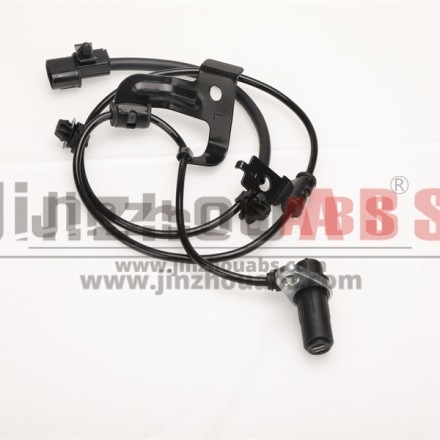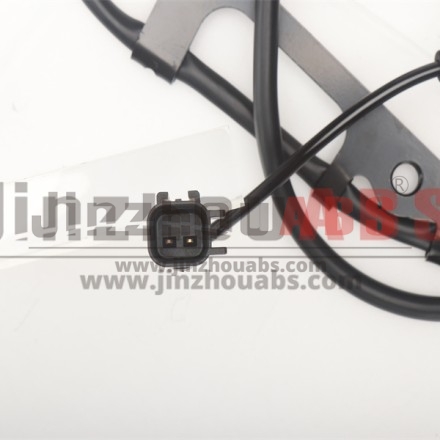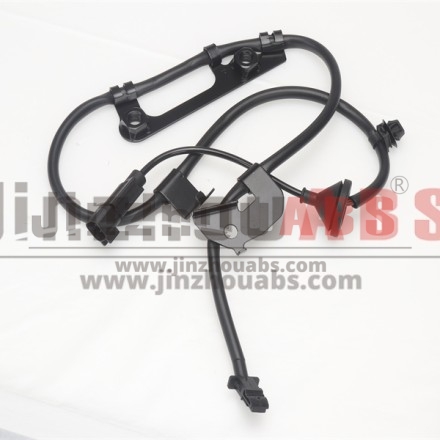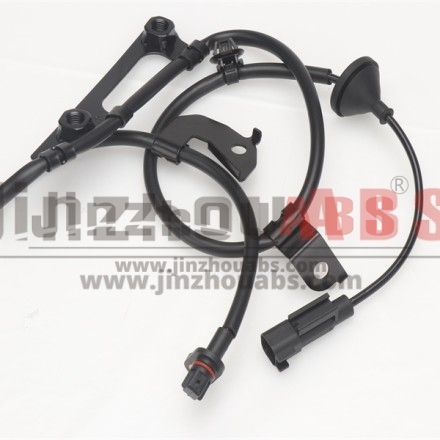Diagnosing ABS Failures Caused by Wheel Speed Sensors: Analysis and Case Study
The Anti-lock Braking System (ABS) is a critical technology in modern vehicles, designed to enhance driving safety by preventing wheel lock-up during emergency braking. By continuously monitoring the speed of each wheel, ABS ensures improved vehicle control and stability.
However, as a key component of the ABS, a faulty wheel speed sensor can lead to ABS malfunction, posing potential safety risks. This article explores the symptoms of wheel speed sensor failures, diagnostic methods, and presents a case study to analyze their impact on the ABS system while offering practical solutions.

Symptoms of Wheel Speed Sensor Failures
ABS Warning Light Activation: A faulty wheel speed sensor often triggers the ABS warning light on the dashboard, indicating abnormal signals detected by the ABS control unit.
Braking System Malfunction: In some cases, the ABS function may completely shut down due to signal issues, increasing the risk of wheel lock-up during emergency braking.
Unstable Braking Performance: Irregular signals from the wheel speed sensor can cause the ABS to malfunction or activate unexpectedly, reducing braking stability on slippery roads.
Other Irregularities: Additional issues may include abnormal steering, uneven braking force distribution, or uneven tire wear.
Diagnostic Methods for Wheel Speed Sensor Failures
Reading Fault Codes: Using an OBD diagnostic tool to retrieve fault codes from the ABS control unit can help pinpoint the defective wheel speed sensor. For instance, fault code “C0035” may indicate a signal issue with the left-front wheel speed sensor.
Data Stream Analysis: Analyze real-time data from the diagnostic tool to identify signal loss or irregular fluctuations in the readings from the wheel speed sensors.
Physical Inspection: Check the sensor and its wiring for damage, loose connections, or contamination by debris or metal particles that could interfere with signal transmission.
Electrical Testing: Use a multimeter to measure the resistance or output voltage of the sensor to determine if it falls within the normal range.
Case Study
Case Background: ABS Warning Light Activation on a Passenger Vehicle
A passenger car’s ABS warning light turned on during operation. The driver also reported that the braking system failed to respond effectively on wet roads, leading to a near-accident.
Steps in Fault Diagnosis:
- Fault Code Reading
The diagnostic tool revealed fault code “C1023: Right-rear wheel speed sensor signal loss.” - Sensor and Wiring Inspection
Examination showed that the wiring for the right-rear wheel speed sensor was damaged due to prolonged friction, causing signal interruption. - Component Replacement
The right-rear wheel speed sensor and its wiring were replaced. Additionally, debris around the sensor was cleaned. - System Reset and Testing
After clearing the fault codes, a road test confirmed the ABS system’s functionality, and the warning light remained off.
Outcome and Conclusion:
The ABS failure in this case was caused by damaged wiring for the wheel speed sensor. The case highlights the importance of inspecting sensor wiring for wear during diagnosis. Thorough checks and systematic troubleshooting are essential in resolving such issues effectively.
Preventive Maintenance and Recommendations
- Regular Inspections
Periodically inspect wheel speed sensors and their wiring to ensure they are secure, undamaged, and free of contamination. - Keep Sensors Clean
Maintain a clean environment around the sensor and the wheel speed ring to prevent interference from dust, mud, or metal particles. - Careful Driving
Minimize driving in harsh conditions to reduce the risk of physical damage to the sensors and wiring. - Prompt Repairs
Address ABS warning lights or braking irregularities promptly to prevent further deterioration and maintain safety.
Conclusion
Wheel speed sensors are integral to the proper functioning of the ABS system. Their failure not only triggers warning lights but can also result in significant safety risks, such as braking instability or complete system shutdown.
By applying systematic diagnostic methods and regular maintenance, potential failures can be effectively identified and resolved, ensuring vehicle safety and performance. This article aims to provide practical insights and guidance for handling similar issues in automotive diagnostics.




